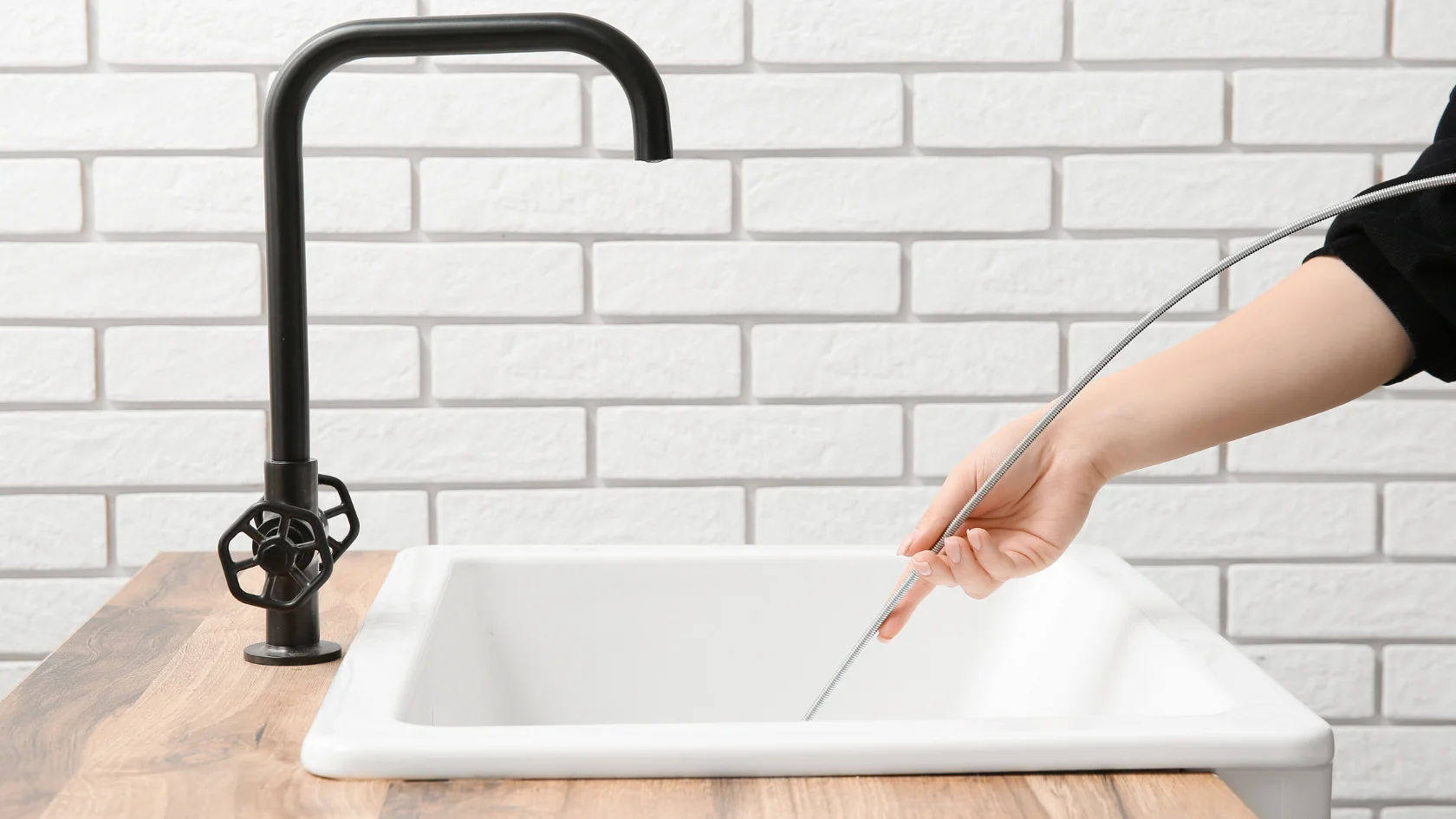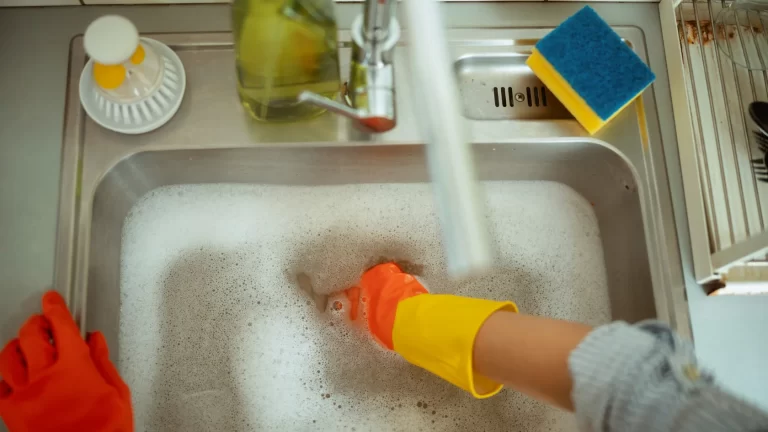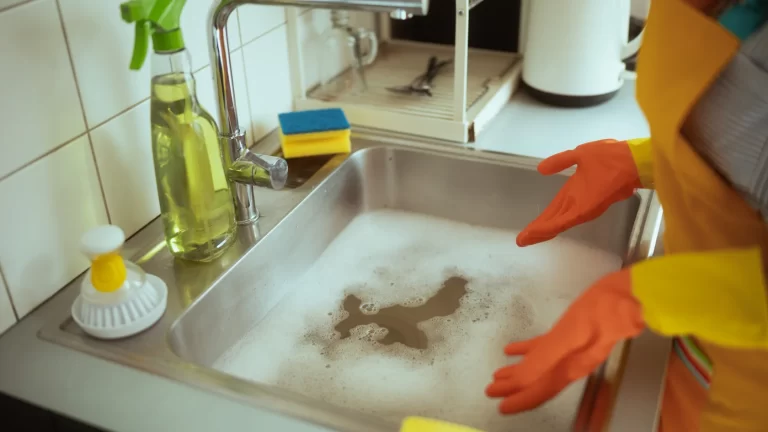The water in the sink abruptly stops running while you’re doing the dishes. You attempt a quick plunger job and possibly add some hot water, but to no avail. It’s likely that you have more than one obstruction to cope with. A clogged drain may be located far down the pipe, beyond the reach of most do-it-yourself solutions.
Ignoring a clogged drain deep within your plumbing system might result in a sewer backup, unpleasant odours, and delayed draining. It’s more than simply a nuisance. Understanding what causes these deep blockages and how to properly remove them is essential to preventing costly repairs and protecting your home’s plumbing system.
In this blog, we’ll cover how to identify, prevent, and fix a clogged drain deep in the pipe. We’ll learn about the common causes, practical DIY solutions, and when it’s time to contact a licensed Toronto plumber like Absolute Draining & Plumbing.
Contact us today through our form or call +1 (416) 252-5557 for expert plumbing, drain, and related services in Toronto, Etobicoke, Mississauga, and across the GTA.
Understanding Deep Drain Clogs
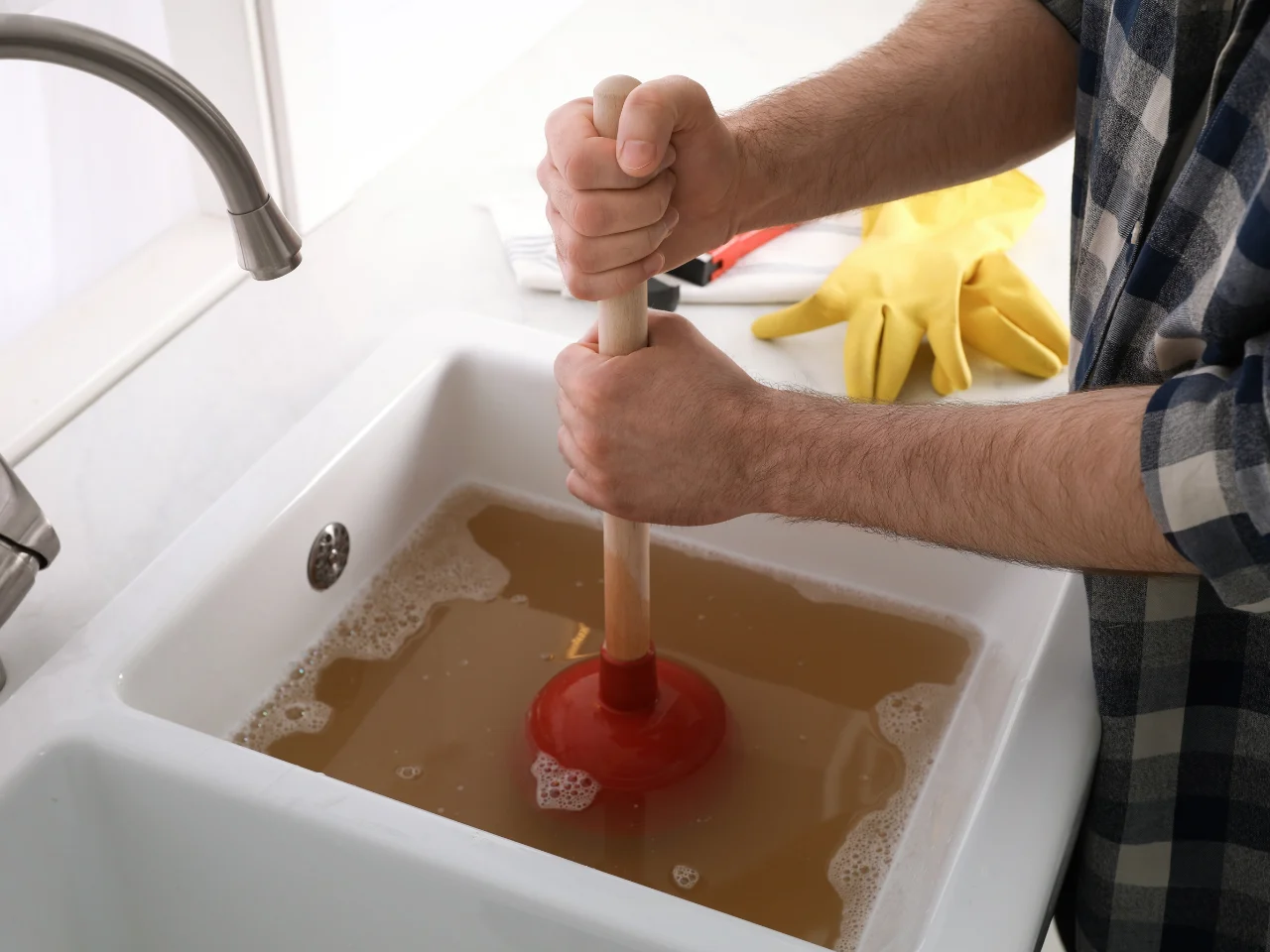
A deep drain clog is different from the usual buildup near your sink or shower drain. Instead of being trapped near the surface, this type of blockage occurs further down — often within the main drain line or sewer lines that connect your fixtures to the city’s drainage system.
When water stops draining properly and you’ve already tried basic fixes like plunging or drain cleaners, the issue likely sits deep within the drain pipe or even under the house. These clogs are harder to reach and may require specialized tools, like a drain snake or high-pressure jet, to dislodge completely.
Common Causes of Deep Drain Clogs
Here are the most frequent causes of a clogged drain deep in pipe:
1. Tree Root Intrusion
Tree roots are one of the most common culprits behind main sewer line blockages. Roots naturally seek out moisture, and if there’s even a small crack or joint in your drain pipe, they can grow inside, eventually blocking the flow entirely. This is especially common in older Toronto neighbourhoods where clay pipes were used.
2. Grease and Oil Buildup
It may seem harmless to pour fats, oils, or grease down the kitchen sink, but when they cool, they solidify and stick to the interior of pipes. Over time, this buildup narrows the passage, trapping food scraps, soap scum, and debris, forming a stubborn clog deep within your drainage system.
3. Foreign Objects and Non-Flushables
Even items labelled “flushable” — like wipes, paper towels, and hygiene products — can cause deep drain clogs when they fail to break down. These can combine with grease or hair to create a solid mass within the main drain or sewer line.
4. Hair and Soap Scum
In the bathroom sink or shower, hair mixes with soap residue to create a sticky buildup. At first, it collects near the p-trap, but eventually, water pressure pushes it deeper, forming a blockage within the pipe.
5. Aging or Damaged Plumbing Infrastructure
Older homes around Toronto often have corroded or cracked drainpipes. Over time, mineral buildup, rust, and misaligned pipe joints allow debris to collect and clog your plumbing system.
Signs You Have a Clogged Drain Deep in Pipe
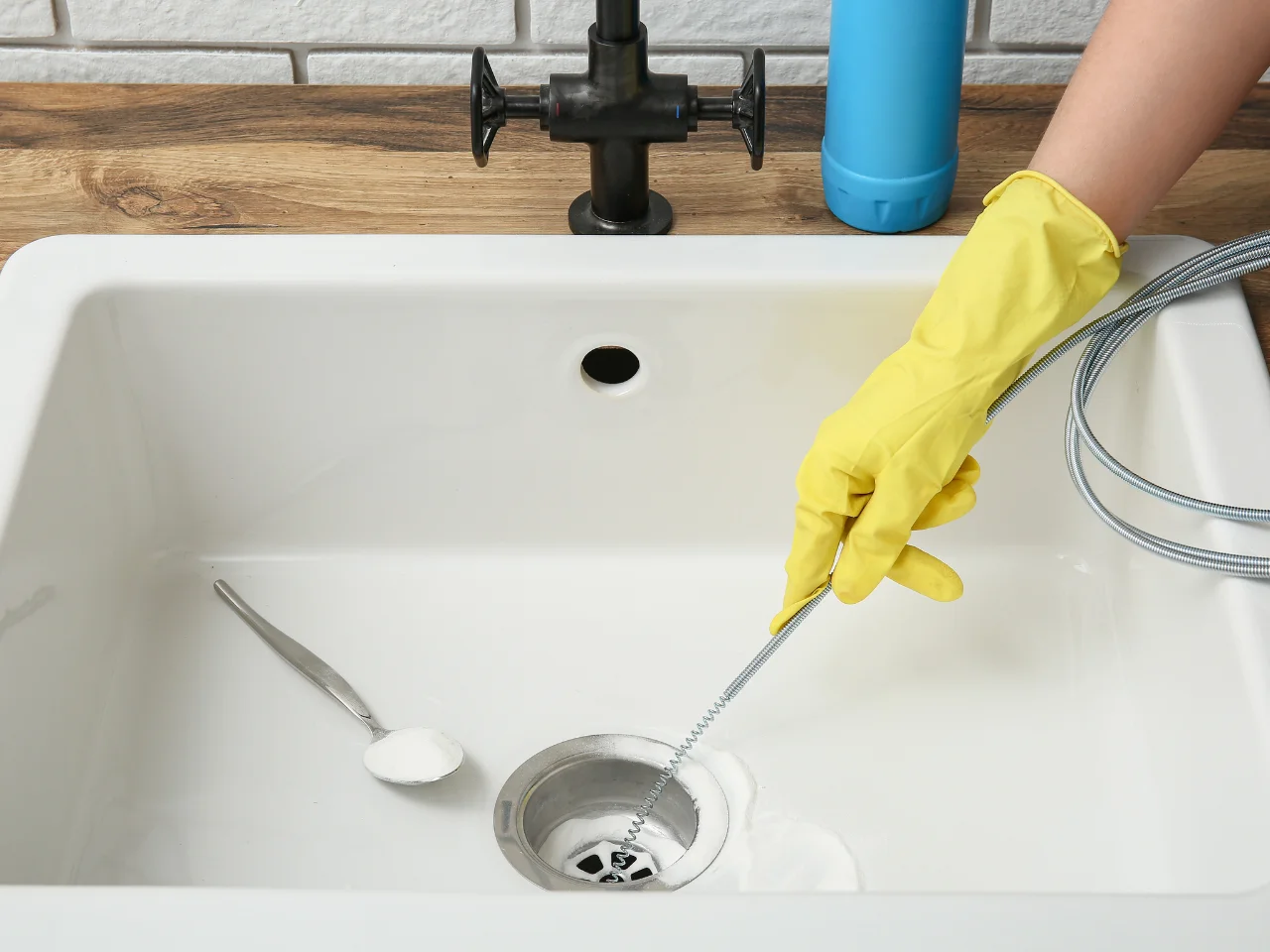
Deep drain clogs can be tricky to spot until the problem escalates. Watch for these warning signs that the issue is more than just a surface blockage:
- Multiple fixtures are clogged at once (e.g., toilet, kitchen sink, and bathtub).
- Water backs up into the lower drains when you flush or run the dishwasher.
- Slow drainage throughout your home, even after cleaning traps.
- Gurgling sounds or bubbling from your drains or toilets.
- Sewage smell from the drain or near basement floor drains.
- Standing water that won’t clear, even after plunging.
If several of these occur together, the clog likely lies deep within your main drain line or sewer connection — a problem best handled by professional plumbing experts.
DIY Methods to Fix a Clogged Drain Deep in Pipe
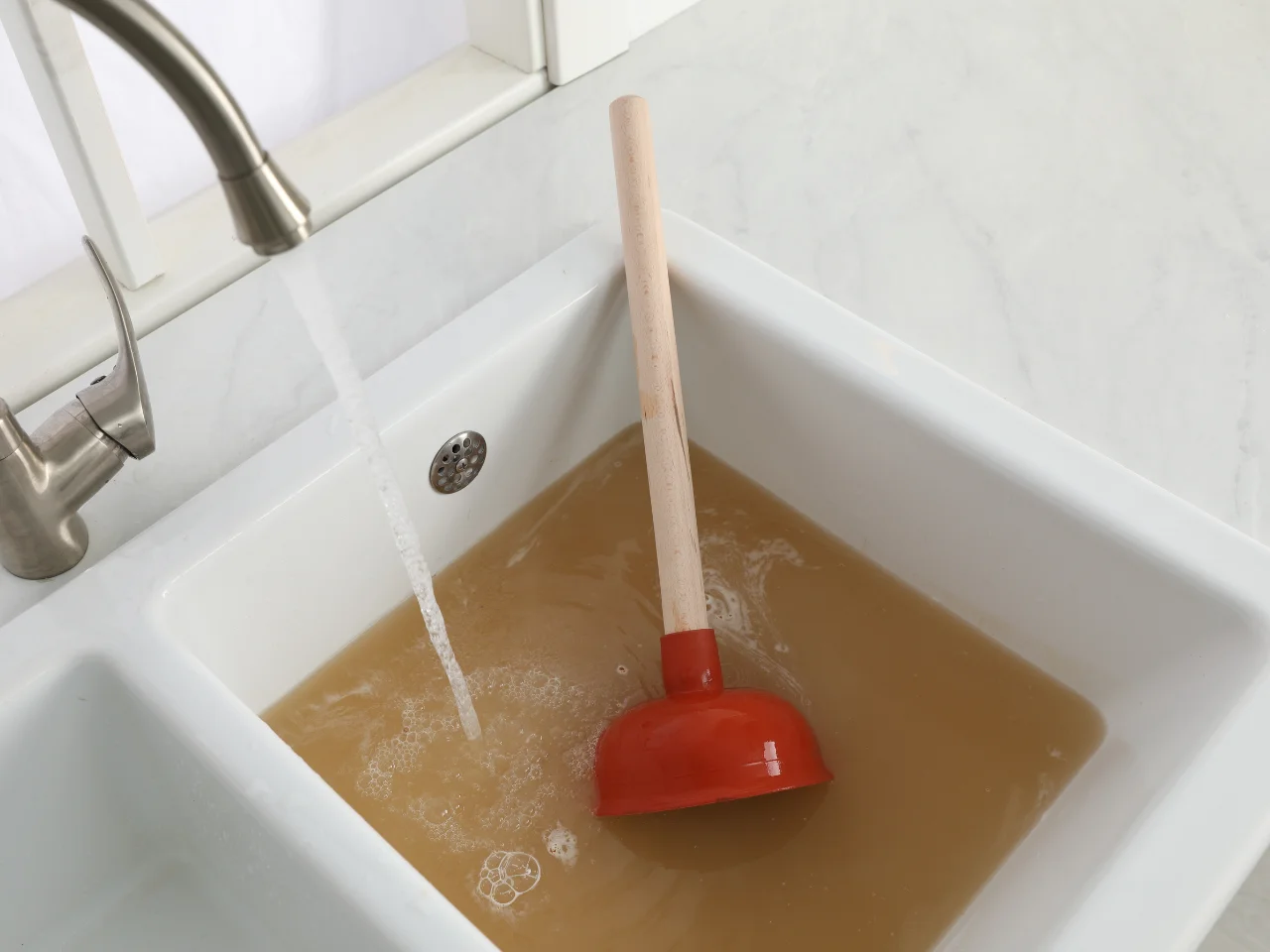
Before hiring a professional, you can try few DIY methods to clean clogged drains. These can help remove tiny accumulations or temporarily improve flow, but they may not always be able to eliminate a deep obstruction.
1. Boiling Water Method
Sometimes, the simplest fix can be surprisingly effective. Pouring boiling water down the drain helps soften grease, soap scum, and small obstructions.
How to do it:
- Boil a kettle or pot of water.
- Slowly pour hot water down the drain, allowing each pour to work for 30 seconds.
- Repeat this 2–3 times to help clear the clog.
This method works best for kitchen sinks affected by grease buildup. Avoid using it on PVC pipes, as the high temperature may weaken them.
2. Baking Soda and Vinegar Reaction
A natural and environmentally safe way to unclog drains without using harsh chemicals by using common home items.
Steps:
- Pour one cup of baking soda into the drain.
- Follow it with one cup of vinegar.
- Let the mixture fizz for about 15–30 minutes.
- Flush the drain with boiling water to wash away loosened debris.
This method helps dissolve minor buildup inside the sink drain and keeps your pipes smelling fresh.
3. Using a Plunger
A plunger can generate suction powerful enough to dislodge a small blockage sitting just inside the drain pipe.
How to use it effectively:
- Ensure the plunger cup covers the drain completely.
- Run a bit of water to help form a tight seal.
- Push up and down vigorously for about 30 seconds, then release.
- Repeat as needed until the water drains freely.
For toilet clogs, use a flange plunger designed specifically for the bowl’s shape.
4. Drain Snake or Auger
When a plunger or boiling water doesn’t work, a drain snake (also called an auger) can help reach deeper clogs. It’s a flexible cable that winds through the pipe to break up or hook onto blockages.
Here’s how to use one:
- Insert the snake into the drain opening.
- Turn the handle clockwise to feed it deeper into the pipe.
- When you feel resistance, rotate and push gently to dislodge the clog.
- Pull the snake back out and flush the drain with hot water.
Small drains can be cleared using manual snakes, but major or deep clogged drains beneath the home or main sewage lines are better suited for powered augers.
5. Wet/Dry Vacuum
If you have a wet/dry shop vacuum, it can be used to suck out debris from the drain pipe. Set the vacuum to liquid mode, cover any overflow holes to create suction, and run it for 30–60 seconds. This approach is particularly effective for standing water in the kitchen or bathroom sink.
6. Commercial Drain Cleaners (Use with Caution)
Although buildup can be swiftly removed with chemical drain cleaners, they can also damage pipes and the environment.
- Choose a product safe for your type of pipe.
- Follow manufacturer instructions carefully.
- Never mix different drain cleaners.
- Avoid frequent use to prevent pipe damage.
If you still have a blocked drain after using a cleaner, it’s time to call a professional plumber — forcing more chemicals can make things worse.
When It’s Time to Call a Professional Plumber

While DIY methods work for minor plumbing issues, a clogged drain deep in the pipe often needs professional attention. Here are clear signs it’s time to bring in the experts from Absolute Draining & Plumbing:
- Multiple drains are slow or backed up at once.
- DIY efforts, including plunging or snaking, didn’t help.
- You notice gurgling or bubbling after flushing.
- Water backs up into the bathtub or the basement floor drain.
- There’s a strong sewer smell from your drains.
- You suspect tree root intrusion or damage in underground pipes.
Professional plumbers use camera inspection tools to locate the clog and determine whether it’s caused by roots, grease, or structural damage. They can then use high-pressure jetting, no-dig drain repair, or pipe replacement if necessary.
At Absolute Draining & Plumbing, our Toronto plumbing team specializes in drain repair, main sewer line cleaning, and clog removal using modern, non-invasive techniques. Whether it’s a residential kitchen sink or a commercial drainage issue, our team provides fast, reliable service with a 25-year warranty on drain repairs.
Contact us today through our form or call +1 (416) 252-5557 for expert plumbing, drain, and related services in Toronto, Etobicoke, Mississauga, and across the GTA.
Professional Methods for Clearing Deep Drain Clogs
Here’s how expert plumbers typically handle deep drain blockages that home remedies can’t reach:
1. Drain Camera Inspection
A waterproof camera is inserted into the drainpipe to locate the exact source of the clog. This visual inspection helps identify whether it’s grease buildup, foreign objects, or root intrusion causing the issue.
2. Hydro Jetting (High-Pressure Jet Cleaning)
In order to remove mineral buildup, grease, and debris, a high-pressure jet of water is sent into the pipe. This is one of the best methods for unclogging deep-seated drains and reestablishing full flow.
3. Drain Snaking (Power Auger)
A professional-grade auger is used to cut through stubborn clogs or tree roots. These machines can reach deep within the main sewer line — much farther than a household snake can go.
4. No-Dig Drain Repair
If the clog is caused by cracked or collapsed pipes, trenchless repair technology allows plumbers to fix the damage without digging up your yard.
5. Drain Replacement
In severe cases — such as when pipes are corroded or structurally compromised — complete drain replacement may be necessary. This ensures long-term reliability and prevents recurring blockages.
Preventing Clogs in the Future
Once your drain is clear, you’ll want to keep it that way. Here are expert tips from Toronto plumbers to prevent clogs deep in pipes from forming again:
- Use drain strainers to catch hair and food particles.
- Never pour grease or oil down the sink.
- Dispose of coffee grounds, eggshells, and starchy foods in the garbage, not the garbage disposal.
- Run boiling water down the drain once a week to melt minor buildup.
- Clean drains monthly with a baking soda and vinegar flush.
- Schedule annual drain inspections — especially if your home has older pipes or large trees nearby.
- Watch for slow drainage and address it early to prevent deep blockages.
By following these preventive measures, you’ll protect your plumbing system and reduce the risk of a costly sewer line backup.
Why Toronto Homeowners Trust Absolute Draining & Plumbing
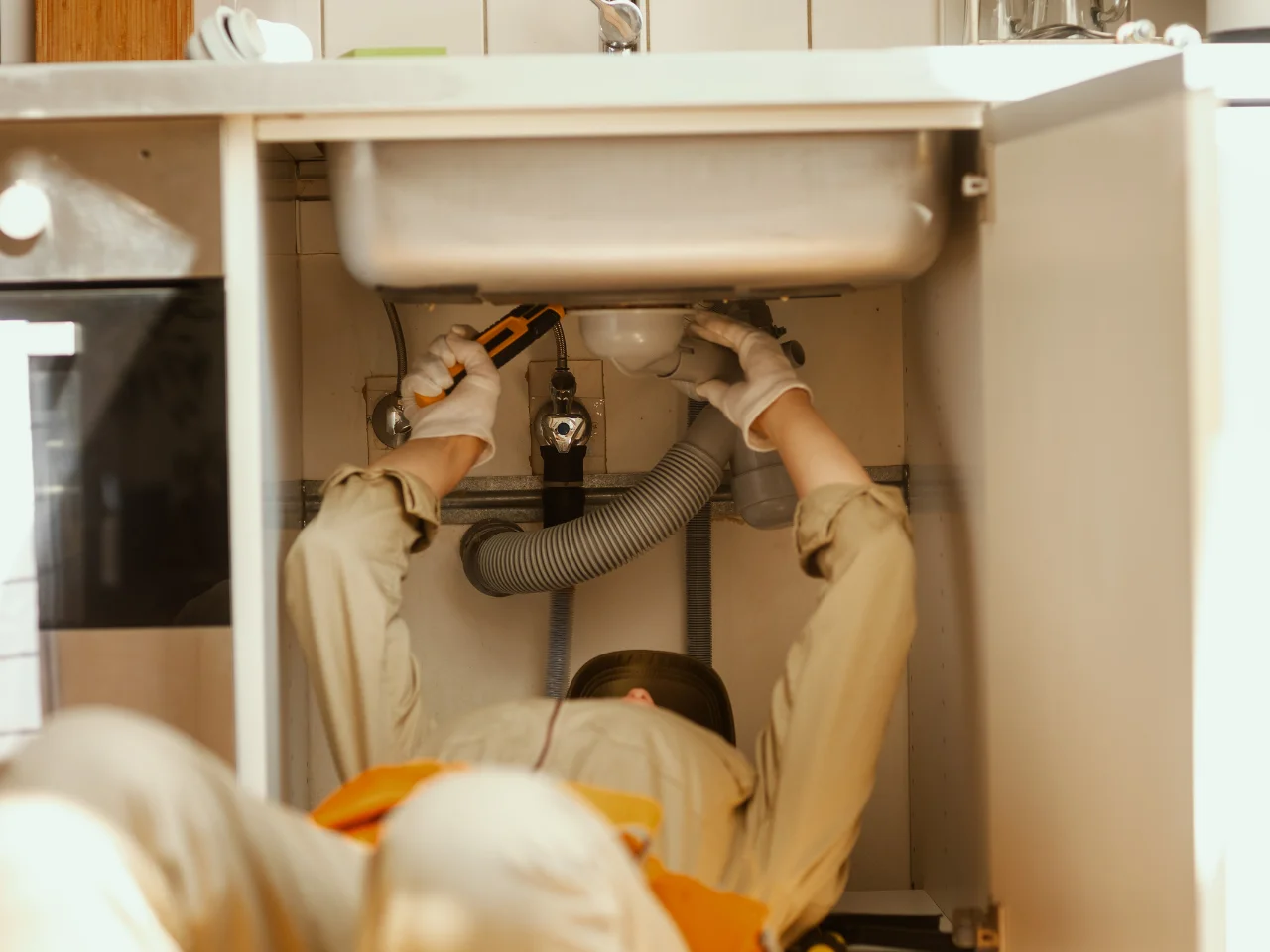
For over 20 years, Absolute Draining & Plumbing has been a trusted name across Toronto and the GTA, helping homeowners and businesses solve tough drainage and plumbing issues.
Here’s why customers continue to choose us:
- Flat-rate pricing — no hidden fees or hourly surprises.
- 25-year warranty on drain repair work.
- 24/7 emergency services for sudden plumbing problems.
- Licensed and insured plumbers who handle every job professionally.
- Toronto-owned and operated, serving our local community with pride.
Whether it’s a clogged drain deep in a pipe, a backwater valve installation, or a main water line replacement, our team has the experience, equipment, and expertise to restore your plumbing system quickly and efficiently.
Take Control of Your Drains Today
If left unattended, a clogged drain deep in the pipe can escalate from a minor annoyance to a major plumbing problem. Deep obstructions frequently require expert assistance, but surface clogs can be cleared with do-it-yourself solutions like baking soda and vinegar, boiling water, or a plunger.
Our expert plumbers will inspect your drainage system, locate the blockage, and restore full flow — so you can enjoy peace of mind knowing your home’s plumbing is in the best hands.
Contact us today through our form or call +1 (416) 252-5557 for expert plumbing, drain, and related services in Toronto, Etobicoke, Mississauga, and across the GTA.

